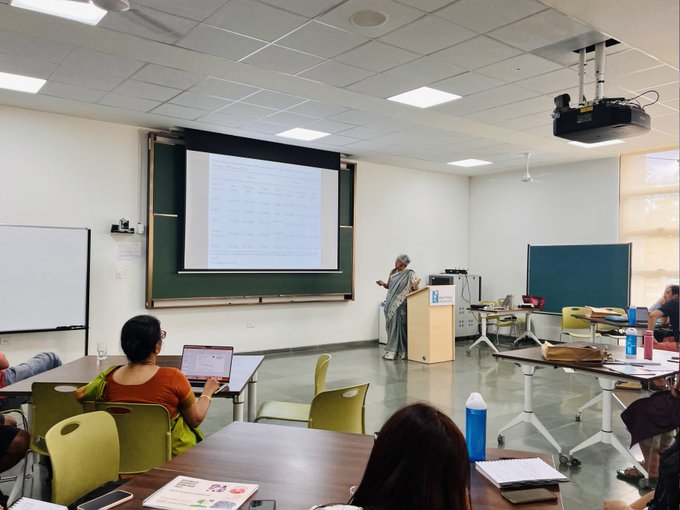Madhura Swaminathan starts Day 2 of
#AGW2023
with her seminar on 'Food Security in India' focusing on the availability and access to adequate food in the country.
🧵
{1/8}
1
3
16
Replies
Starting with the question of food security in India, Prof. Swaminathan examines the paradoxical relationship between food production, stocks & the prevalence of malnourishment in India, with about 80% Indians being unable to afford a healthy diet (FAO 2020).
{2/8}
1
0
4
Swaminathan (1996) finds that Indian government manages food security in four forms:
- Public procurement through support prices
- Role of State in holding buffer stocks and storage
- Delivery through Public Distribution System
- Interventions in trade and open market.
{3/8}
1
0
2
Food availability is measured based on production, net imports, change in stocks, seed & feed, & waste. In 2022, grain production was 283.1 million tonnes with a net availability of 259.1 million tonnes. Around 18% was procured and 15% was distributed (DFPD & AGRICOOP).
{4/8}
1
0
2
She examines the transition from a universal to a targeted Public Distribution System (PDS) due to liberalization and subsidy reduction in the 90s. She states that the National Food Security Act 2013 provided a “rights based justification of what was happening earlier”.
{5/8}
1
0
2
Prof. Swaminathan argues for the universality of India's PDS pre-liberalisation as the welfare costs of exclusion errors outweigh the financial costs of inclusion errors (A Cornia & F Stewart, 1993). Empirically, she states, all studies find high rates of exclusion errors.
{6/8}
1
0
2
She analyzes foodgrain distribution: in-kind vs cash, considering factors like population size, inflation adjustment, attainment level, market prices, and connection with producers & MSP. She emphasizes that grains act as a subsidy for consumers and producers.
{7/8}
1
0
2
Prof. Swaminathan ends by calling for context-specific solutions to alleviate food insecurity through
- universal or near-universal
- unconditional transfers, or
- cash and kind transfers in the form of food rations, school meals, cash doles, and employment programmes.
{8/8}
1
1
4

